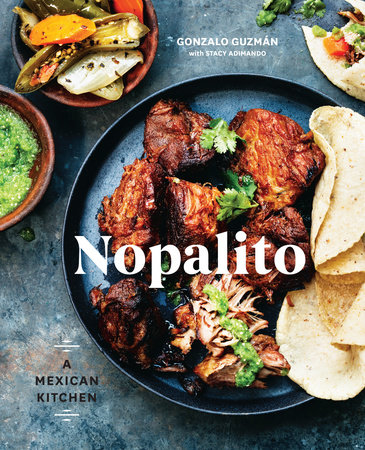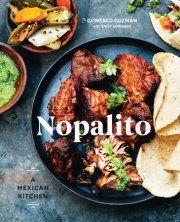IN THE MEXICAN KITCHENMany of the food traditions of Mexico historically revolved around three very simple pillars:
We ate mostly what we could grow ourselves. We preserved what we grew, through drying, pickling, and other techniques. We used all parts of everything we had access to, from the husks of the corn cobs to the fat from the animals. We had little choice but to eat ingredients that were in season or to eat food that was grown locally. These options were based not on values but on necessity, as it was all many of us could afford. If you look at it this way, the key ingredients and ideas of Mexican cooking will seem like mostly common sense, and they are really not hard to understand or intimidating to master. Still, introducing them into your kitchen can open up a whole new world of flavors.
There are some cuisines that tout simplicity and integrity of ingredients as important above all else, and while Mexican ingredients may seem simplistic, what surprises many people about cooking authentic Mexican food is the intricacy, variety, and layers of flavor involved. For instance, the drying, then burning of chiles; the soaking and grinding of corn into masa; the blending of spices and herbs together to create a balanced salsa or mole—they all contribute to a nuanced and layered characteristic of the cuisine. Mexican food is, at heart, a labor-intensive style of cuisine from a hardworking people. To me, it is far too rare to see a restaurant or a home cook go the extra mile to transform simple ingredients, and that is why I felt inspired to open Nopalito—and to write this book.
Another part of the inspiration was to offer what I think is a glimpse into the true spirit, roots, and flavors of regional Mexican cooking. In the United States there is this idea that all Mexican meals start with chips and salsa, and that everything is laden with lard or cheese and comes with a side of rice and beans. But throughout my childhood in Mexico, our tables were spread with many dishes— most of them fresh, colorful, and inspired by what came straight from the sea and the land that day. The dishes that we ate in our homes every day are alive and well in these pages.
CURTIDOS “PARA TACOS” Pickled Vegetables Makes about 4 cupsOpen the fridge of any Mexican home cook or chef, and you will find a jar or two of pickled vegetables. Traditionally, they are made with whatever vegetables are on hand, and the brine usually has a sweet-spicy quality from a combination of jalapeños and a little sugar. We call this style of chopped pickled vegetables
para tacos because of their petite size—the idea is that you can spoon these pickles right on top of tacos, or eat little bites of them on the side. But they are delicious with any antojito.
11⁄2 cups carrots, halved lengthwise, then sliced into half moons
11⁄2 cups jalapeños, halved lengthwise, then sliced into half moons
11⁄2 cups small cauliflower florets (3⁄4-inch pieces)
1⁄4 white onion, thinly sliced
1 tablespoon plus 2 teaspoons kosher salt
1 cup white vinegar
1 tablespoon plus 11⁄2 teaspoons sugar
1 bay leaf
2 cloves garlic
1⁄2 teaspoon dried marjoram
3⁄4 teaspoon dried thyme
3⁄4 teaspoon ground allspice
In a large bowl, combine the carrots, jalapeños, cauliflower, and onion; toss with the salt and let rest for 30 minutes.
In a medium pot, combine 1 cup water with the vinegar, sugar, bay leaf, garlic, marjoram, thyme, and allspice and bring to a boil.
Transfer the vegetables and salt to a 1-quart mason jar or comparable container. Pour the boiling vinegar mixture over the top and cover the jar with plastic wrap. Let cool slightly, then cover with a secure lid and let rest in the refrigerator for at least 8 hours before eating. Will keep for 2 to 4 weeks refrigerated.
Copyright © 2017 by Gonzalo Guzmán with Stacy Adimando. All rights reserved. No part of this excerpt may be reproduced or reprinted without permission in writing from the publisher.





